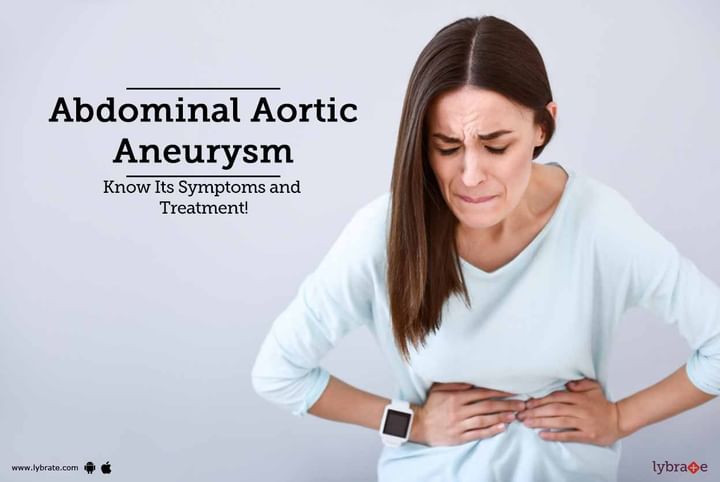Abdominal Aortic Aneurysm - Know Its Symptoms and Treatment!
The aorta is the largest blood vessel that carries blood to the body, running from the heart, through the chest and on to the abdomen. An enlargement of the lower part of the aorta is called an abdominal aortic aneurysm. If it were to rupture, it could cause massive internal bleeding leading to fatal consequences.
Symptoms
Abdominal aortic aneurysms are extremely difficult to detect as they rarely show any symptoms and develop slowly. They are more often than not detected during other unrelated medical examinations. Routine medical tests such as ultrasounds, X-rays ordered for different reasons usually helps detect these aneurysms. The growth of these aneurysms are also difficult to predict, while some never expand, others either expand over time or very quickly in a very short period of time. As they enlarge you might notice symptoms such as-
- A pulsating sensation near your naval area.
- A constant and sharp pain on the side of your abdomen.
- Shooting pains in your back.
If an abdominal aortic aneurysm is suspected, your physician will prescribe specialized tests to confirm it. Tests for Abdominal Aortic Aneurysm include-
- Abdominal Ultrasound
- Computerized tomography (CT) scan
- Magnetic resonance imaging (MRI)
Treatment
The aim is to prevent aneurysm from rupturing. Depending on the position, size and the rate of growth of aneurysm, your physician will decide whether to monitor it or opt for surgery.
Medical Monitoring
If the size of your aneurysm is manageable, then to avoid the risks that are involved with surgery, your physician will recommend medical monitoring. That will include regular appointments with your doctor to check that it isn’t growing and to manage any other medical condition that might aggravate your aneurysm. Regular imaging tests will be ordered to check the rate of growth of aneurysm. An abdominal aneurysm after six months of diagnosis and regular follow-ups after that.
Surgery
If you are experiencing sharp pains, leakage or tenderness, then depending on how fast your aneurysm is growing; your physician will recommend different options for surgery.
1. Open Abdominal Surgery
This open surgery involves removing the damaged section of the aorta and using a synthetic tube to replace it. It takes about a month or so to recover from this particular surgery.
2. Endovascular Surgery
Less invasive than an open surgery, this procedure involves inserting a synthetic graft attached to a catheter through an artery of a leg and threading it up into the aorta. Though the recovery time is much shorter and the procedure much less painful and invasive, it can’t be performed on more than 30% of the patients who have been diagnosed with an aneurysm.
Surgical treatment for an abdominal aortic aneurysm is dependent on a variety of factors including age of the patient, size, and location of aneurysm, other pre-existing medical conditions. Discuss comprehensively the options and decide with your physician what is most suitable for you.
Being asymptomatic in most cases, abdominal aortic aneurysms are difficult to distinguish, though when diagnosed it is fairly straightforward to treat. The important thing is to be vigilant and to be detailed in your discussions with your physician.



+1.svg)
